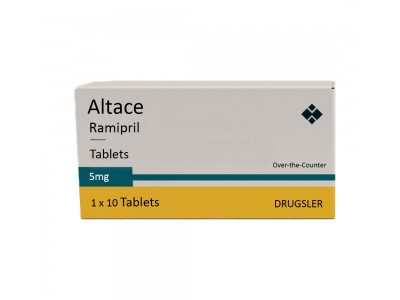Altace (ramipril) is a commonly prescribed medication for managing high blood pressure and heart conditions. However, when it comes to pregnancy and breastfeeding, the safety of taking Altace becomes a serious concern. This article delves into whether it is safe to take Altace during pregnancy or while breastfeeding and examines potential risks and side effects.
Understanding Altace and Its Uses
Altace, also known by its generic name ramipril, belongs to a class of medications known as angiotensin-converting enzyme (ACE) inhibitors. It works by relaxing blood vessels, making it easier for the heart to pump blood and lowering blood pressure. It is commonly prescribed to patients with hypertension, heart failure, and to prevent heart attacks. However, its safety during pregnancy and breastfeeding is often questioned.
Is Altace Safe During Pregnancy?
According to the U.S. Food and Drug Administration (FDA), Altace is classified as a category D medication for pregnancy. This means that there is evidence of potential harm to the fetus, especially during the second and third trimesters. Studies have shown that taking Altace during pregnancy can lead to serious complications such as kidney problems, low blood pressure, and developmental issues in the baby. If you are pregnant or planning to become pregnant, it is crucial to consult with your healthcare provider before taking Altace.
Risks of Altace During Pregnancy
Taking Altace during pregnancy may cause several risks, including but not limited to:
- Can Altace harm my baby? Yes, studies have shown that ACE inhibitors like Altace can harm fetal development, leading to birth defects, low blood pressure, or kidney problems.
- Altace and pregnancy side effects can include low amniotic fluid, which can impact fetal development.
- Potential issues with side effects of Altace in pregnancy include lung damage in the newborn, low blood pressure at birth, and kidney failure.
Is It Safe to Take Altace While Breastfeeding?
As for Altace while breastfeeding, there are concerns as well. Although it is not known whether ramipril passes into breast milk, caution is advised. The Altace breastfeeding precautions suggest that it is not recommended for breastfeeding mothers, especially if the infant is under six months old. The safety of Altace and breastfeeding safety is still being studied, but the risks to the infant may outweigh the benefits of continuing the medication.
Precautions and Alternatives
If you are breastfeeding or planning to breastfeed, it is important to consult with your doctor about alternatives to Altace. There are other antihypertensive medications that are considered safer for breastfeeding mothers. Some of these include Altace use during pregnancy alternatives like beta-blockers or calcium channel blockers, which have been shown to be safer for both mother and baby.
Conclusion: Consult Your Healthcare Provider
Ultimately, whether you are pregnant or breastfeeding, it is vital to discuss any concerns regarding medications like Altace with your healthcare provider. Only they can assess your individual circumstances and recommend the best course of action. Never stop or adjust your medication without professional guidance, as this can lead to serious health risks for both you and your baby.
In summary, Altace pregnancy safety is a major concern, and it is generally advised to avoid this medication during pregnancy unless absolutely necessary. Similarly, Altace breastfeeding precautions suggest that alternative medications should be explored to ensure the safety of the nursing infant.

